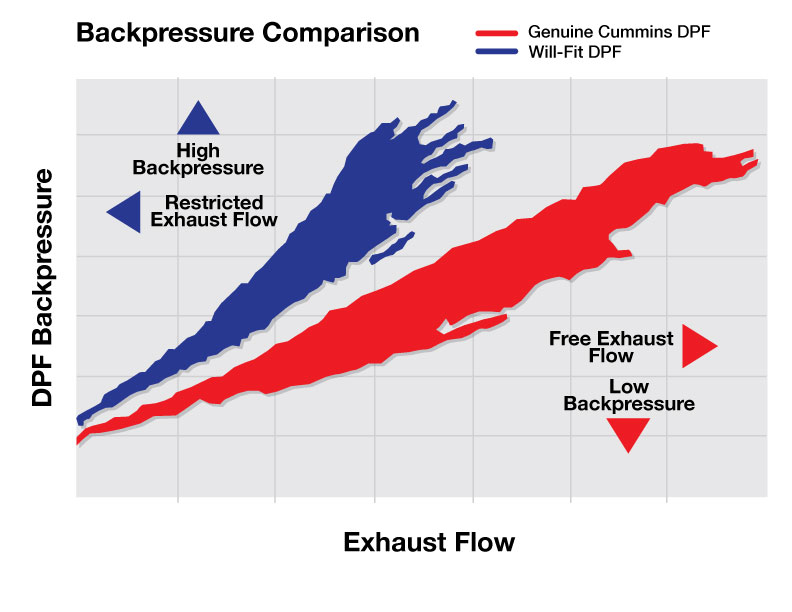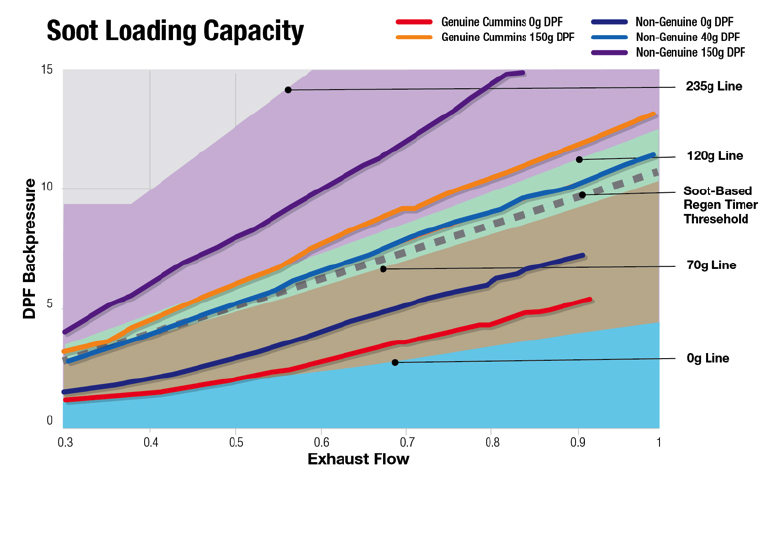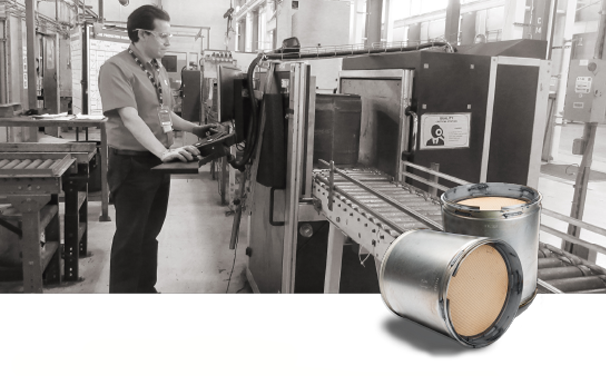Put to the Test: Genuine Cummins DPF vs Will-Fit DPF
In a recent study, we compared Genuine Cummins DPFs to will-fit DPFs in vehicles equipped with 2007 ISX15 engines, under real-world operating conditions. The difference in performance was staggering.

Will-fit DPFs Can Create Harmful Levels of Backpressure
In tests, the will-fit DPF demonstrated higher backpressure and reduced exhaust flow when compared to the Genuine Cummins DPF during real world operation. This can cause premature turbocharger wear and failure, reduce fuel economy and increase operating costs.
The design and construction of will-fit DPFs are significantly different versus Genuine Cummins DPF filter chambers. At zero grams of soot loading, the will-fit DPF produced more engine backpressure than the Genuine Cummins DPF, negatively affecting exhaust flow.

Lower Soot-Loading Capacity Leads to Excessive Regenerations
The Genuine Cummins DPF delivered more than 3.75 times the ash holding capacity of the will-fit DPF we tested, holding up to 150 grams of soot before an active regeneration took place.
Excessive active regeneration events can negatively impact fuel efficiency, lead to metal fatigue on the exhaust pipes and canister, increase the risk of the DPF cracking and/or melting and produce additional wear on other upstream components.

Coming Clean – Where Will-fit DPFs Fail. Again.
Soot/ash accumulation in the aftertreatment DPF is a function of normal engine operation. Over time, this accumulation can cause frequent aftertreatment regenerations. When a DPF fault code is registered, a restriction test is required to determine if the DPF needs to be cleaned. Before the test takes place, a stationary regeneration is conducted to remove soot present in the DPF.
Test data shows that, after a stationary regeneration, Genuine Cummins DPFs allow adequate exhaust flow, while will-fit DPFs still exceed the threshold for failure, requiring a time-consuming, costly field cleaning event.
+
-
Additional Factors to consider
Precious Metal Content is Critical
The right amount of precious metal content and correct distribution throughout the filter are critical. The will-fit DPFs tested did not meet Cummins standards. This creates significant consequences downstream in the SCR portion of the aftertreatment system, including the potential to trigger fault code lamps and increased consumption of Diesel Exhaust Fluid (DEF).
A Minimum of $1,400 Saved in Total Cost of Operation
Owners can plan on buying two will-fit DPFs versus one Genuine Cummins product. At today’s prices, that would cost about $3,400 versus $2,000 for the Genuine Cummins DPF. That’s roughly $1,400 extra for the DPFs alone. Downtime, missed deliveries, reduced fuel efficiency and labor costs all add even more.
We've Got Your Back
A product is only as good as the company that stands behind it. Genuine Cummins DPFs are backed by North America’s largest and most capable parts and service network, with over 3,500 authorized locations. So no matter where the next load takes you, rest assured that there’s a nearby Cummins facility.
Find Your Genuine Cummins Parts



